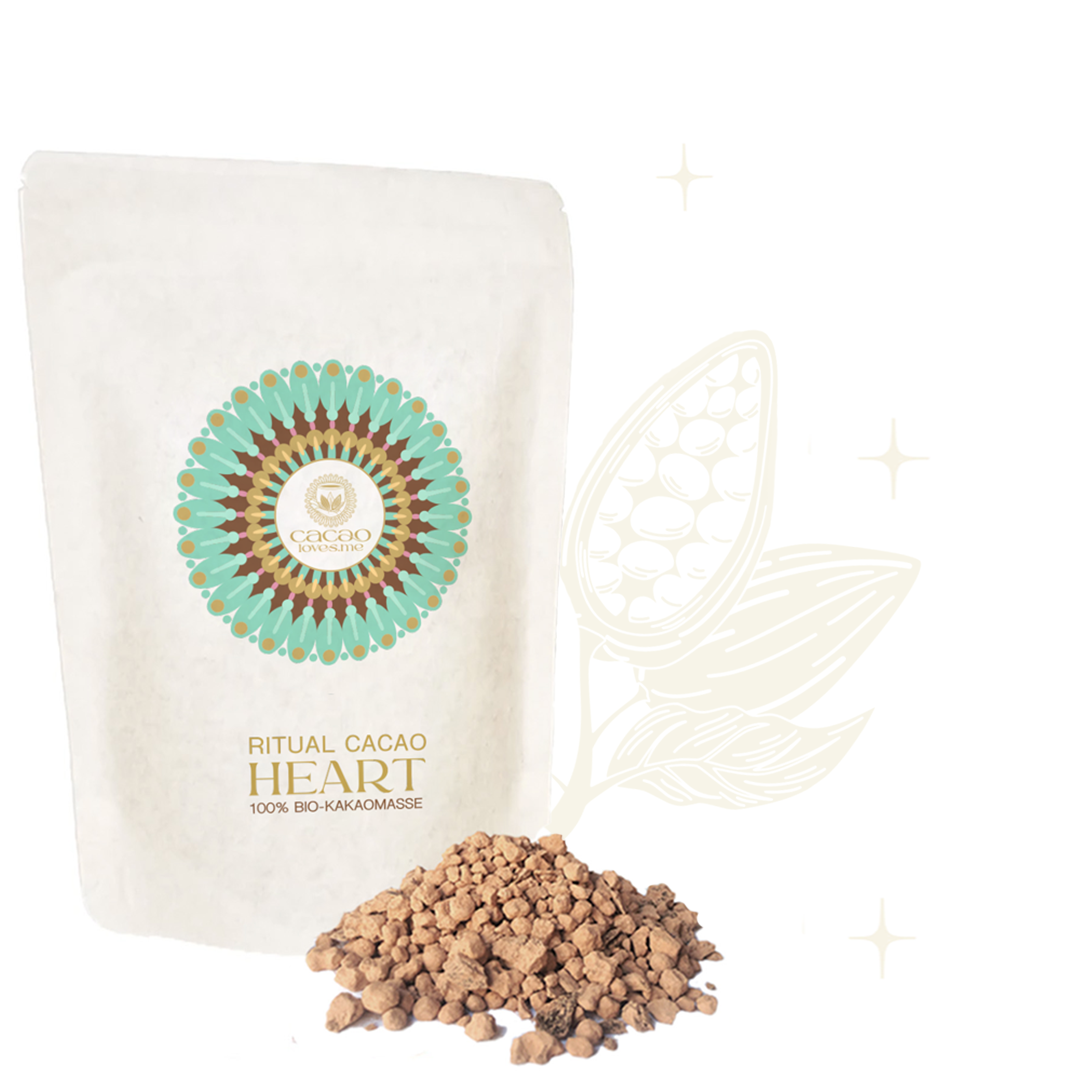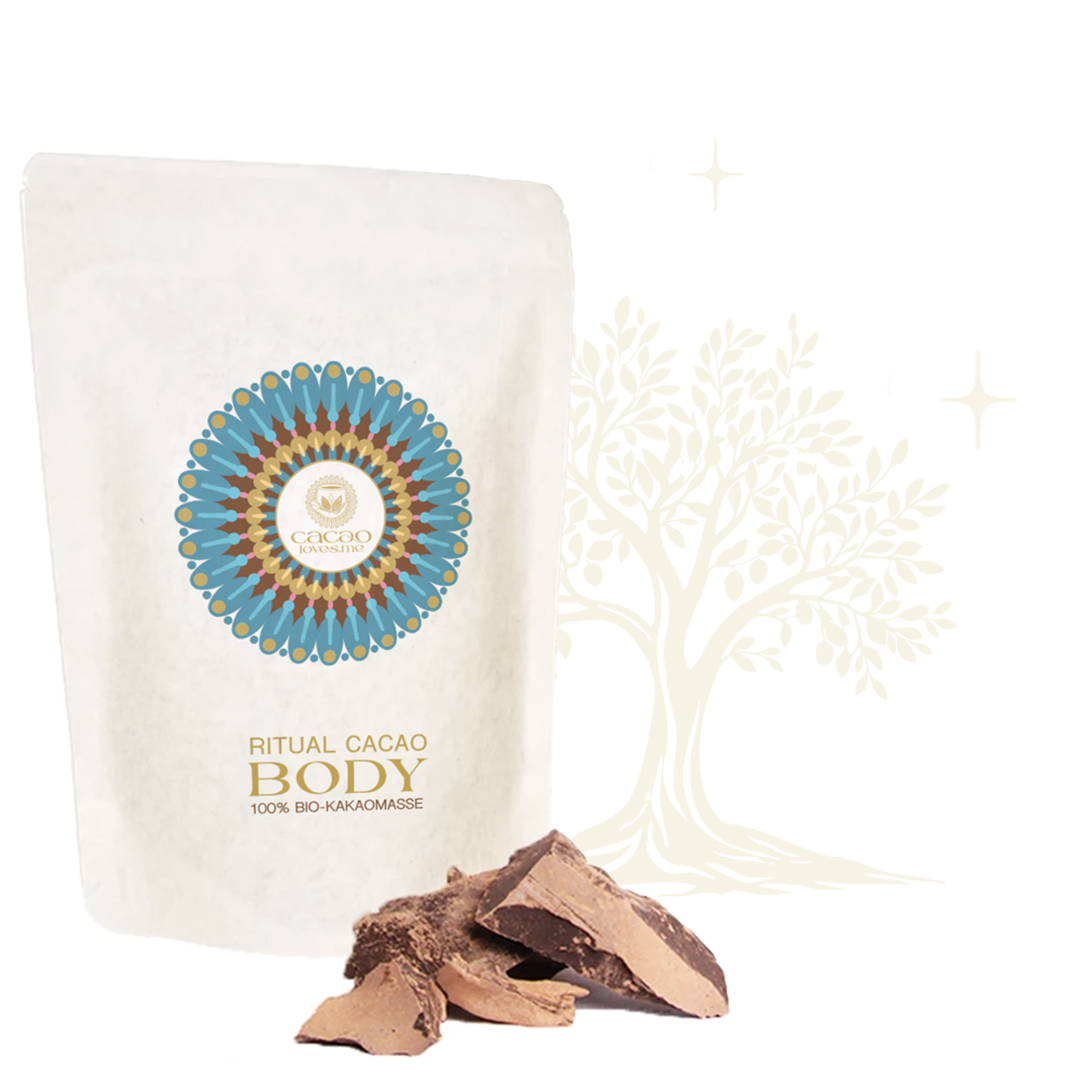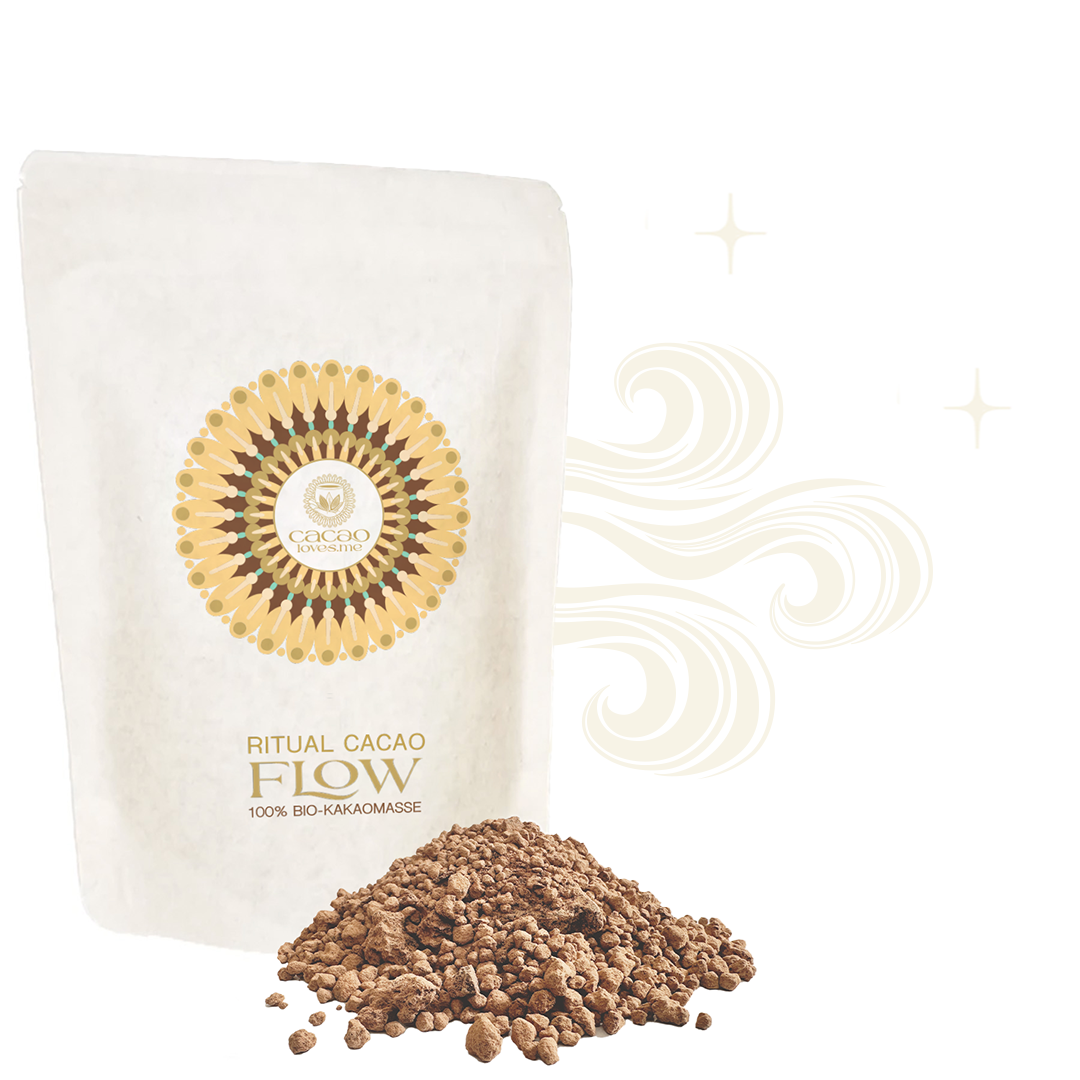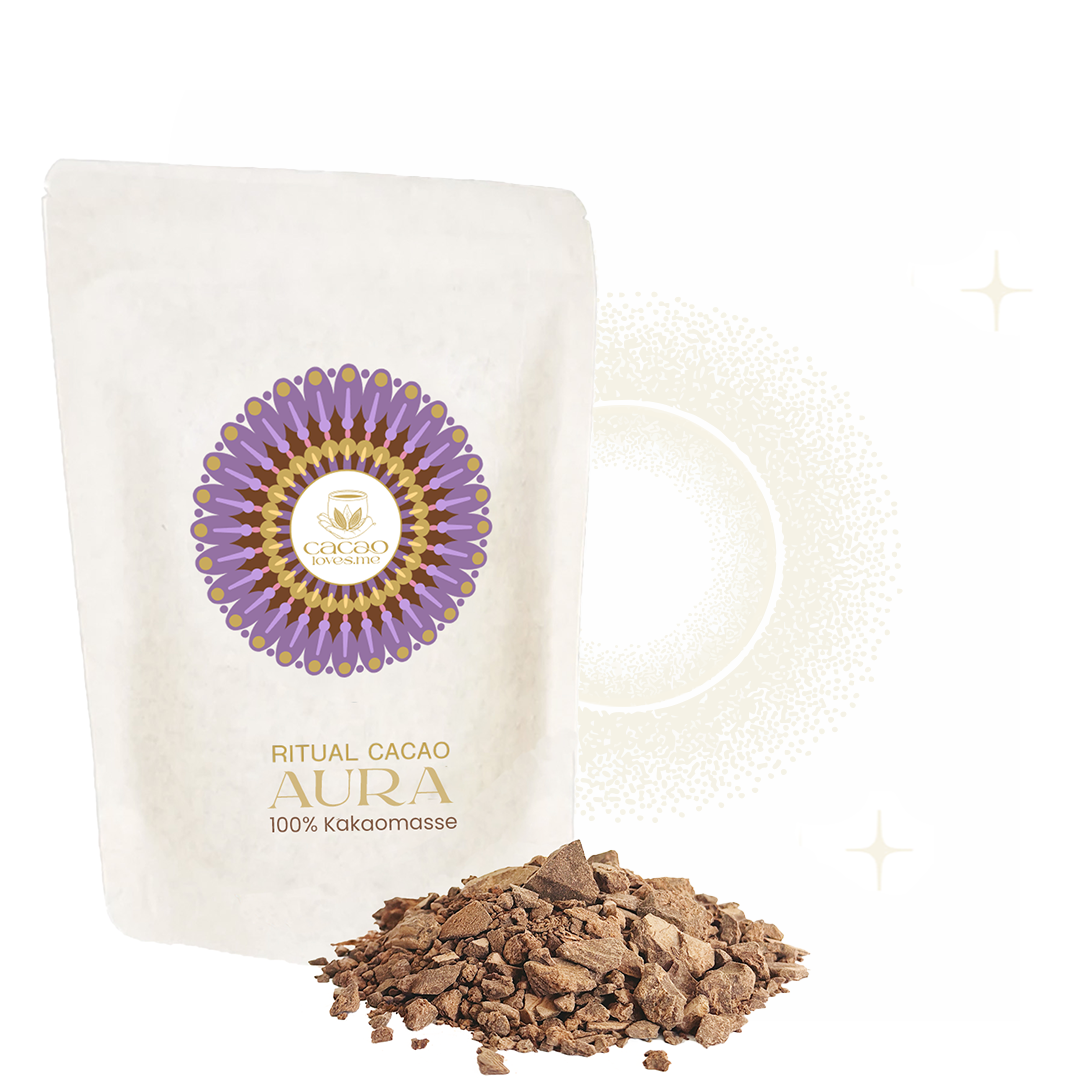Marcus and I are sitting at Arnimplatz in Berlin. Marcus talks about his trip to Colombia, about cacao and the vision of planting a "sacred" cacao forest there. I listen to him with fascination and would like to become a cacao gardener myself right away - a cacao tree sponsor. Now I am very happy that Marcus is telling us about his trip to Colombia and the Spirited Cacao Forest for our blog. Sincerely, Felix

A guest post by Marcus Weber
How a Spirited Cacao Forest, a sacred cacao forest, is being created in Colombia
It's Saturday afternoon, I'm sitting with Juan Pablo in the nursery and I have tears in my eyes. I've been here for a week now, in northern Colombia, on a narrow stretch of coast between the Caribbean Sea and the snow-capped peaks of the Sierra Nevada de Santa Marta. A week of adventures that ends with us planting cacao trees together.

Left: Cacao pod with seeds / Right: Juan Pablo plants cacao beans
We insert bean by bean into the prepared soil pellets. First, make the small hole a little deeper with your index finger, then insert the cacao bean shoot-side down. Press the earth down a little - done. With each bean I put a wish in the ground: love, balance, health, gratitude, joy, patience. That's why I traveled here to help grow our Spirited Cacao Forest.

Marcus planting the cacao beans
The beginnings, part 1: The foundations of a bridge are created
Throwback: I can still remember sitting in my kitchen at a Zoom meeting about a year and a half ago. Lena, Gabi and Serap are connected to me, we know each other through Serap and her Cacao Guardian training. Now we are talking about our project to build a bridge to the homeland of cacao. We have met at least ten times, entered a medicine circle with the four cardinal points and the elements earth, water, air and fire. And I still wonder what I'm doing in this round and if it's not utterly impossible to build this bridge. From Europe to a foreign continent. But that day, during the conversation, my eye falls on the pack of cacao lying on my kitchen table. I think: "If cacao found its way to me - then there must be a way to it."
Arrival in the Sierra Divina
"I'll pick you up at the entrance to Tayrona National Park," Ricardo had said to me before my trip. He owns the land on which the cacao forest is created. Ricardo lives in Bogota, Colombia's capital, which is about an hour and a half's flight south of Santa Marta and the cacao forest. He's in his early 40s, a freelancer, in the midst of a transformation from businessman to meditation teacher.
And so, on a Sunday morning, I am sitting in a café at the entrance to the national park and waiting. Even if I have my doubts again – a few minutes after the agreed time, Ricardo actually gets out of a large, dark green car and hugs me. A short drive east on the coast road and we arrive at "Sierra Divina," the 34-acre property he bought ten years ago. Back then everything was bare, eroded, run down; the previous owners had operated intensive cattle breeding here. After a few years of dormancy, the land had recovered and when Ricardo then asked himself what to plant on it, the answer was, "Plant cacao."
Together with Juan Pablo, who lives in the village around the corner and has been working for the Federacion Nacional de Cacaoteros for years - an organization that advises Colombian cacao farmers and represents their interests - Ricardo starts a cacao project.

Ricardo (left) and Juan Pablo, founders of the Sierra Divina cacao project
The Beginnings Part 2: The Birth of the Cacao Gardeners
Then our medical circle comes into play: Lena, Gabi, Serap and I find contact with Ricardo across two corners – or he with us. We start exchanging ideas, telling him about our vision of planting a Spirited Cacao Forest. We all work with ceremonial cacao and want to give something back to the cacao – to nourish its source, so to speak. We wish for flowering cacao forests that are not only planted in an ecologically and socially responsible way, but that are created in a sacred way. Forests that truly grow in harmony with Pachamama, with Mother Earth.
At Ricardo we're running into open doors with that. For him, too, cacao is not a commodity, but "holy, a plant medicine, a keeper of wisdom," as he writes in his manifesto. His vision: 11,111 cacao trees growing in a ten-hectare permaculture-based regenerative cacao forest.
Together we are developing the Cacao Gardener Initiative ➚ , a project in which we arrange cacao tree sponsorships for the Sierra Divina. The 55 euros per sponsorship are used for planting, caring for and preserving the cacao trees and their neighboring trees. Our first goal is to plant one hectare - with around 1,100 cacao trees and as many "mother trees" that give the small cacao plants the necessary shade.
The heart of the world
Speaking of shadows: When I get out of the air-conditioned car on Sunday, the midday sun is in top form. It feels like in the tropical house. The mosquitoes are buzzing and we take a first tour of the property. A mango tree greets me, behind it an avocado, a few coconut palms. Next to it is the old farmhouse where Chente lives, who does most of the practical work in the cacao forest with his father and a friend.

Farmhouse in the Sierra Divina
Here the vegetable garden, where tomatoes and peppers grow, but which will soon be converted into a tree nursery. There a small pond, collecting basin for the rainwater. Directly behind it begins the slope on which the first cacao trees are already growing. I walk over, say hello to some of the trees, touch their leaves. I can't believe I'm really here.

Cacao plants from the pilot that started in November 2020
One more sleep, then a week full of adventures begins - the biggest of which will be Migel. He belongs to the Kogi, an indigenous people who lived in seclusion in the mountains of the Sierra for centuries and only made contact with our civilization a few years ago. Migel is a Mama, a kind of shaman. We will pick him up in his village together with his wife Haba, his adult son Juan and three other children. They will be with us for four days, drinking cacao with us and holding ceremonies for the new cacao forest. And I will begin to understand why the Kogis refer to themselves as the "elder" and us as the "younger" brothers - and why they call their land and mountains the "heart of the world". But this is another story.

fltr Marcus, Migel and Juan in the Sierra Divina
Dear readers - the Cacao Gardener Initiative needs further support. I am very happy if you decide to become a cacao gardener too and to build the bridge between the continents. You can find all the information here ➚ .
Sincerely, Marcus




